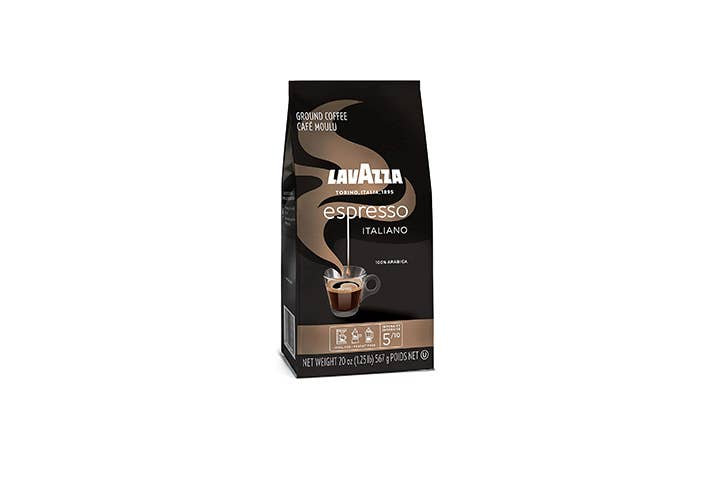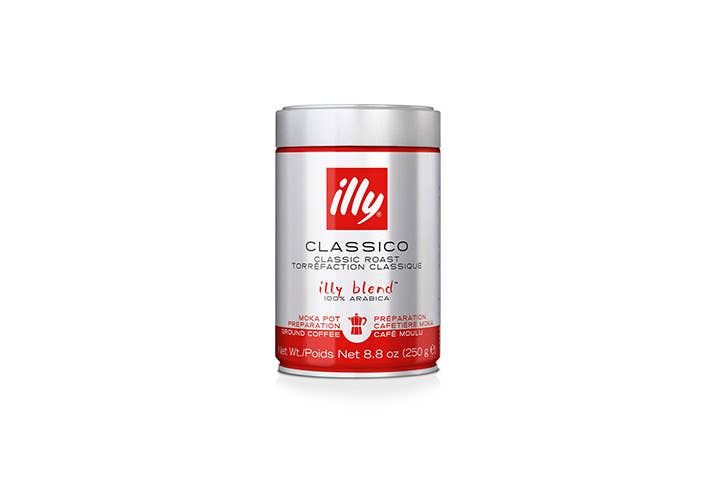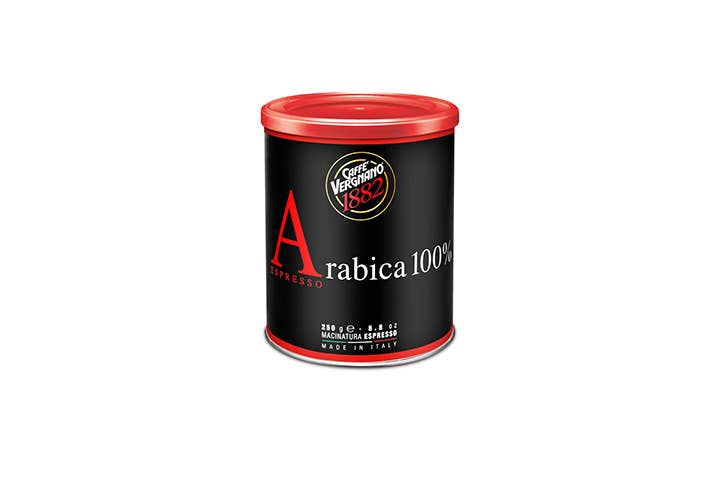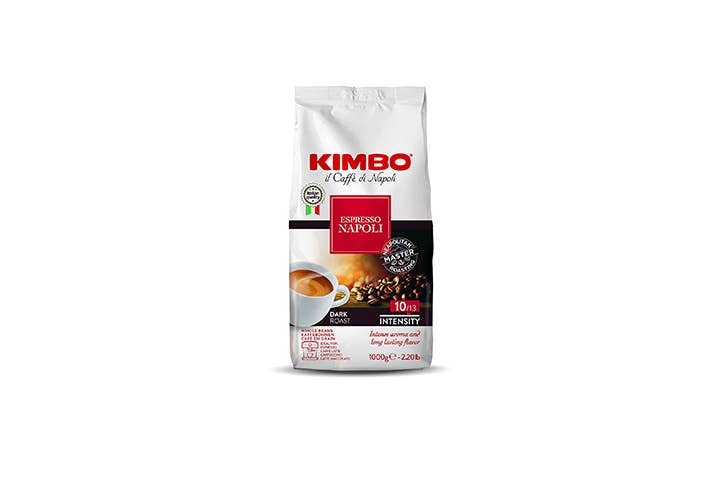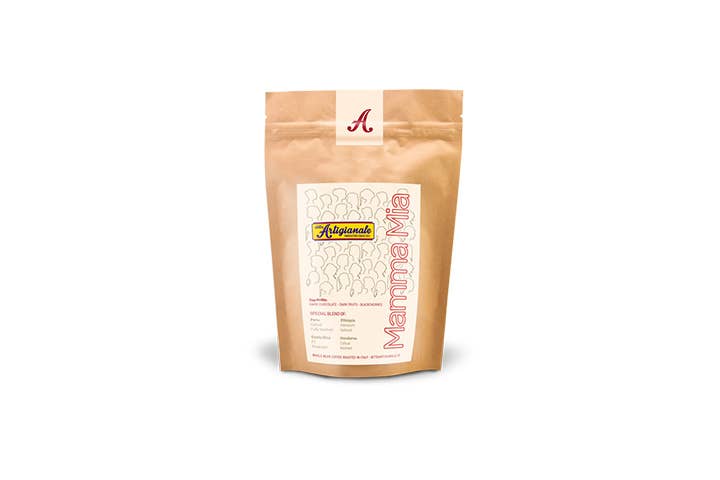For the Best Italian Coffee Brands, It’s All About the Blend
It’s time to grab that Moka pot.
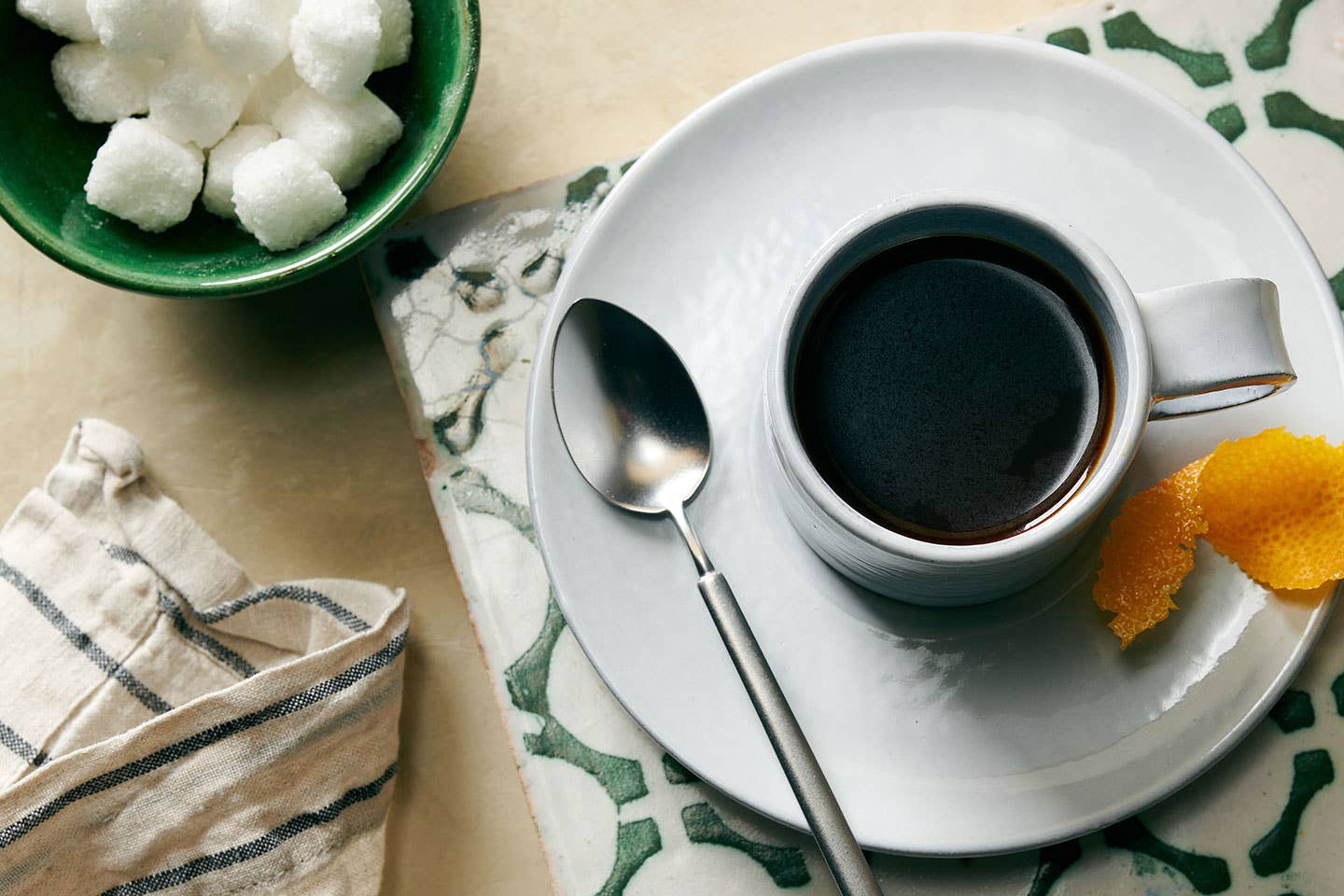
The first sacks of coffee beans in Italy came from Egypt, arriving in the markets of Venice in 1570. Initially regarded by the church as a dangerous drink, it didn't take long for even the Pope to become enamored of the seed of the Coffea plant, and Europe's first coffee houses were born right there in the lagoon city. It was centuries, though, before caffè espresso became a symbol of Italian quality and a beloved ritual, and it wasn't until 1884 that the first espresso machine was invented by Angelo Moriondo in Turin to help baristas make many more coffees in a short amount of time. It took another 20 years before the machine was reproduced for other bars. Even then it wasn't until after the Second World War when people finally had the time to sit and enjoy coffee that the ritual really took off, entering people's homes as well.
These days, the beverage is an indisputable fixture of Italian culture, where there is no better way to start the day than with a classic Moka pot at home or standing at the counter of the local bar. In Italy, the benchmark cup is an intensely flavored coffee, achieved through the toasting process for a dark roast “all'italiana”. It’s preferred by Italians, suggests Vincenzo Fogliano, director of the Department of Food Quality and Design at the University of Wageningen in the Netherlands, because it renders the coffee less acidic and less harsh on the stomach.
A good espresso, even one made at home, should always be full-bodied, full-flavored, and fragrant, served in tiny cups and drunk piping hot in just a few sips. The best Italian coffee brands manage to achieve this trifecta through their unique blends. Understanding those blends, how the coffee is roasted, and the difference in varieties will help any Italian coffee enthusiast choose their right bag.
- Best Overall: Lavazza 100% Arabica Medium Roast
- Best Arabica: Illy Classico Medium Roast
- Best Roast: Caffe Vergnano 100% Arabica Espresso Roast
- Best Espresso: Caffe Kimbo Espresso Napoletano
- Best Artisan Roast: Ditta Artigianale Mamma Mia
Our Top Picks
Best Overall: Lavazza 100% Arabica Medium Roast
Best Overall
Luigi Lavazza began selling coffee from his bottega in Torino in 1895, and one of Italy’s first coffee companies is still a family business. Exporting almost half of its production, it is Italy's most well-known and beloved coffee brand. Their claim to fame is that the coffee blend, the miscela, as it's known in Italian, was invented by Lavazza himself. Their range includes whole beans, pre-ground coffee and coffee pods. Their Crema e Gusto blend is one of Italy's favorites, a 70 percent Arabica 30 percent Robusta dark roast for that bold, classic Italian flavor. Meanwhile, their Super Crema is one of the blends with the highest concentration of Robusta for that coveted crema on the top of an espresso.
Best Arabica: Illy Classico Medium Roast
Best Arabica
Based in Trieste in northeastern Italy, the Illy coffee brand was named after its Hungarian founder, Francesco Illy. Illy invented a coffee machine shortly before the Second World War, as well as a process that keeps coffee fresh for export in pressurized tins, something that still sets them apart from other coffee brands. In 1980, Illy became the first Italian coffee brand in the U.S., where it is still one of the most famous Italian brands. Their Classico is so-named for good reason: It is balanced, smooth, and rich, made with a blend of nine Arabica coffees. It's perfect for the home Moka pot. As a bonus, the tins that their coffee comes in are reusable.
Best Roast: Caffe Vergnano 100% Arabica Espresso Roast
Best Roast
One of Italy's oldest coffee roasters, Vergnano was born in 1882 when Domenico Vergnano opened his shop near Turin in Piedmont. Today Caffe Vergnano is still run by the same family and remains one of Italy's favorites. Caffe Vergnano prides itself on their unique, artisanal, slow-roasting method, and that they roast each origin separately before blending them, which gives the beans a more evenly-balanced roast. Their Arabica Espresso roast is a good example of their signature slow-roasted coffee, which brings out the delicate flavor and aromas of Central and South American Arabica coffees for a well-rounded cup.
Best Espresso: Caffe Kimbo Espresso Napoletano
Best Espresso
This coffee roaster was founded by four brothers in 1963 in Naples, Italy's undisputed espresso capital. Their signature “Espresso Napoletano” coffee is decidedly Neapolitan in character: strong flavored, intense, and smooth with a dark roast and a percentage of Robusta that produces a crema “like you find at a bar in Naples,” as they like to say.
Best Artisan Roast: Ditta Artigianale Mamma Mia
Best Artisan Roast
Micro-roasters are becoming more and more popular across Italy, with many getting attention for their craft not only because of the quality of the coffee, but also for highlighting aspects around coffee production such as sustainability and biodiversity. Ditta Artigianale is a great example of how well-received this outlook has been in Florence. In their first year, they opened not one but two shops, which have proven to become the city's most popular cafes.
Founder Francesco Sanapo, a world barista champion, created the Mamma Mia blend in honor of his mother, who does not like particularly acidic or fruity notes that can be detected in some coffees. To obtain the right balance for this 100 percent Arabica blend, Francesco was careful not to dark roast the beans—which come from Peru, Honduras, Costa Rica and Ethiopia—a composition that he says was studied to give the best results for both espresso and for those who prefer milk in their coffee. “In this cup, you’ll find an intense flavor, smooth body with a long aftertaste,” he explains. “The flavor is characterized by notes of toasted almond, prunes, dates, milk chocolate, and caramel.” Francesco says the Mamma Mia name was also chosen to recognize the all-female production behind this blend. “In fact, all the coffees present in the blend are produced by exceptional women that I personally met during my travels.”
Features to Keep in Mind
Whole Beans vs. Pre-Ground
Buying whole beans means you can grind them yourself just before making coffee for the freshest flavor, always. Whole beans will also keep longer. However, not everyone has a coffee grinder and the convenience of having coffee pre-ground is appealing for many. When buying pre-ground coffee, pay attention to the size of the granules. There are usually two types: an extra fine grind is for the Moka pot or espresso machine, while a regular grind is suitable for filter coffee, from auto drip to pour-over to French press.
Robusta vs. Arabica
Understanding the differences between these two coffee bean varieties explains the preference for certain blends in Italy, and also helps you decide what blend of coffee to choose for your preferred cup.
The Arabica variety has a smooth, sweet taste, with fruity and slightly acidic notes, while Robusta is (as it sounds, “robust”) more intense, stronger, nuttier, and more bitter. It has a much higher caffeine content, too; almost double that found in Arabica. Although Robusta is often regarded by coffee aficionados as the “lesser” variety in terms of quality and flavor, its presence in a blend is responsible for the prized hazelnut-colored 'crema' on top of a good espresso. Those looking for a bigger hit of caffeine will appreciate a mix with more Robusta in it, as well.
In the northern regions of Italy, the ideal blend of espresso seems to be mostly Arabica with perhaps a small percentage, roughly 20 to 30 percent, of Robusta for a fragrant, not too delicate cup. In the South, the preference is for a higher concentration of the intense flavor of darkly-roasted Robusta. A glass of cold water is often served alongside coffee in the central-southern regions of Italy to chase the espresso with, and a bit of added sugar is common (to the extent that some bars, such as the famous Bar Mexico in Naples, will serve you an unsweetened coffee only if requested beforehand).
When choosing a coffee blend, you should always take into consideration how the coffee will be extracted and served: short or long, with or without milk, and how much caffeine you like. If you love espresso, a proportion of Robusta for a good crema and a dark roast for full flavor is ideal, and if you can, grind your own whole beans for maximum freshness and flavor. If a long black or caffè americano is your preference, you should go for a 100 percent Arabica blend, where the delicate aroma and berry and chocolate notes will be highlighted. For cappuccino lovers or those who like milk with their coffee, a blend with a percentage of Robusta, much like for espresso, is a good idea. The stronger roast and flavor will be countered by the sweet milk.
Italian Coffee Regions
The main coffee roasters in Italy are found predominantly in the southern region of Campania, which is not surprising as its capital, Naples, is considered the center of coffee in Italy. It is the home to coffee brands such as Kimbo and Motta, and it is where you'll find the biggest consumers of coffee in the country, plus the namesake for the first at-home coffeemaker (a drip brew pot for the stove top where water is passed through the coffee by gravity, the Napoletana). Naples is also the place where the charitable practice of the caffe sospeso (the “suspended coffee”) exists, an act of kindness, where those who can afford to will leave a payment at the bar, covering in advance the coffee for someone who can't afford it.
The rest of Italy's coffee roasters are concentrated in the north of the country—Emilia Romagna and Piedmont (where you can find historical roasters such as Vergnano and Lavazza, for example) in particular.
Artisan coffee roasters are gaining more popularity in Italy, too. Tuscany, in particular, has a very good offering including our favorite, Ditta Artigianale in Florence; Le Piantagioni del Caffè in Livorno, Piansa; and Slitti Cioccolato e Caffè near Pistoia.
How We Chose These Products
These products were chosen based on the reputation and quality of the products in Italy, as well as the availability of these Italian brands overseas.
Ask the Experts
Q: Do Italian coffee brands always make blends?
Speaking with Carolina Vergnano of Caffe Vergnano on her family's long-standing brand, she explains that the concept of a blend, rather than single-origin coffees, is a very Italian thing, “Like the recipe for tiramisu, coffee is also a recipe and in the end the coffee producer is an artist and each coffee has a different personality,” she explains. The blend crafts that perfect flavor desired by the drinker. Italians love the bitterness and persistent flavor of espresso, for that small, short cup of strong, bitter coffee that is drunk in just moments.
Q: Why is espresso so popular in Italy?
There is generally one ounce of espresso in a cup, and “in those 30ml [1 oz] of coffee, there is content, there are values, raw materials,” Verganano says. “There is in that cup an entire journey, from the plant, to the art of roasting, to the method of extracting the coffee. The extraction is all that the Italian espresso machine is meant to draw out—the aroma, the flavor, the crema. There is a world, the journey, the family. It's much more than just a cup.”
Our Take
These Italian coffee brands also happen to be historic; some of them still run in the same families, built on the traditions, tastes, and habits found in their respective Italian regions. The coffee they produce is therefore made for a particular style. Knowing how the blends are made, understanding how this information can be put to use when making your morning coffee, and whether you need whole or pre-ground beans can all contribute to the best experience tasting Italy in your own cup.
Keep Reading
Continue to Next Story
